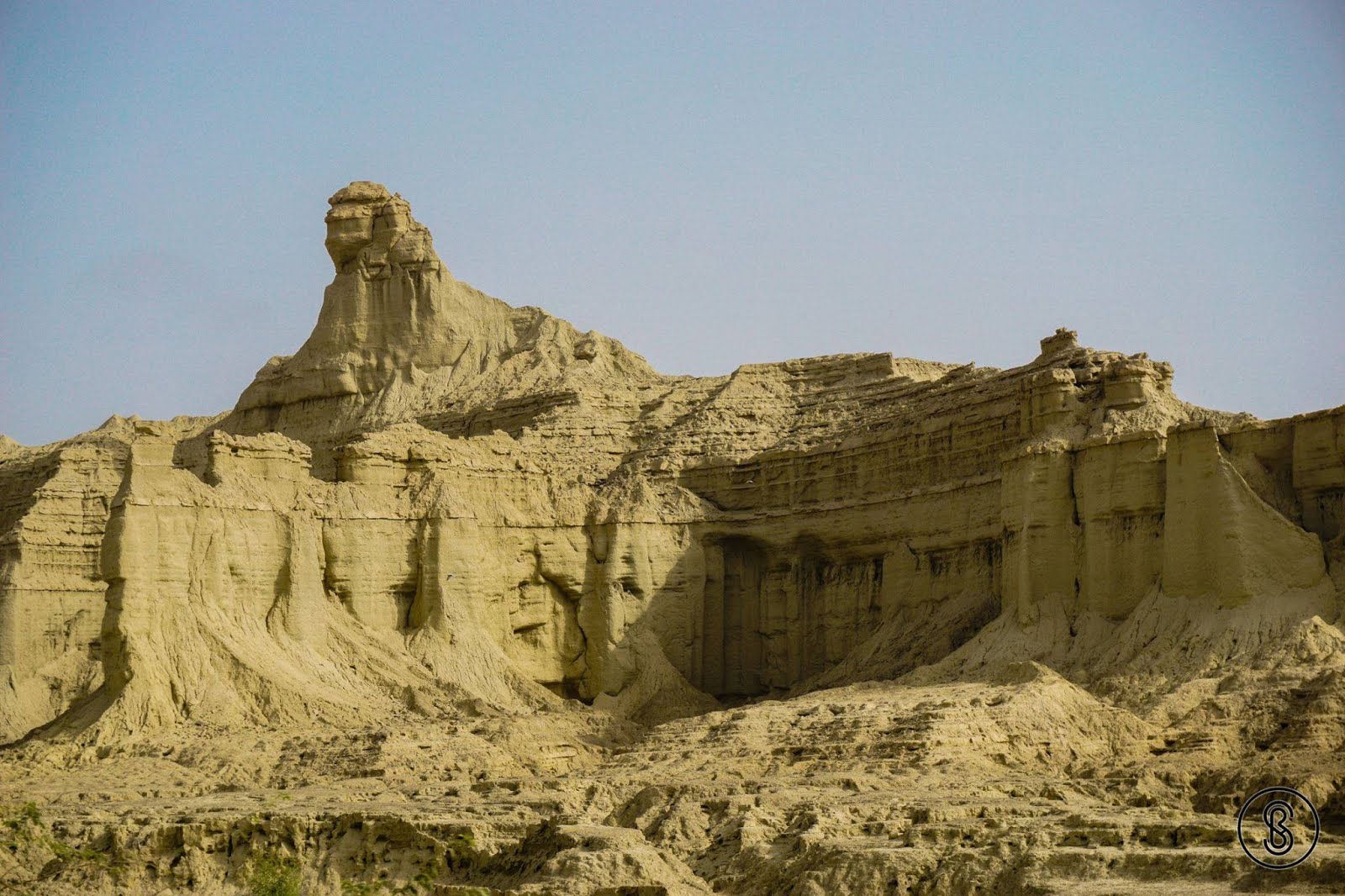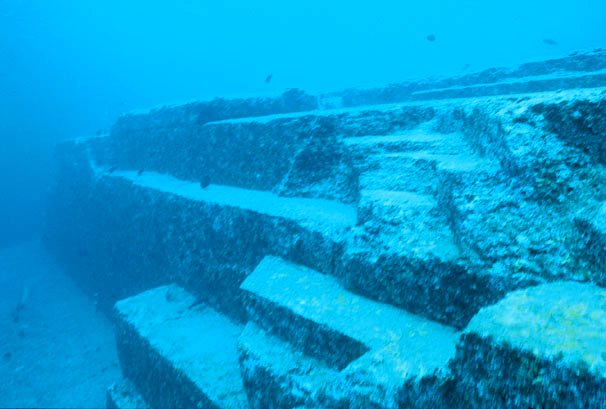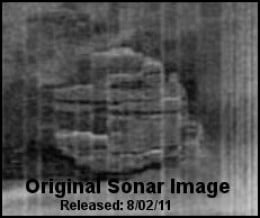It looks like you're using an Ad Blocker.
Please white-list or disable AboveTopSecret.com in your ad-blocking tool.
Thank you.
Some features of ATS will be disabled while you continue to use an ad-blocker.
share:
originally posted by: AnInvisibleCorner
I never said they had machines and i don't think they did, as we have them.
I believe they could have developed completely different ways of achieving what we achieve with machines today.
The whole poinnt of the thread, is that they were hit with more than one massive disaster.
What would be left of our biggest cities if they they were hit with a nuclear bomb and after the dust settled hit again... Im guessing not much.
a reply to: Hanslune
The items you put up were created thousands of years after the end of Ice Age, the pyramids about 4,600 years ago and the Tiwanaku items about 1900 years ago. So way after that time.
Nuclear bomb hits would cause fires and the steel, concrete, plastic, glass. gems, ceramic and brick would be left in large piles of rubble and the foundations left in tact. Those disturbances of the soil would last as long as the land was not erode and until the crust was subducted. Some of the those items would last up to or over 100 million years.
originally posted by: AnInvisibleCorner
Like i said, i can see the resemblance.
Wish i had a photo of the actual component, but i dont.
a reply to: Hanslune
To what exactly? A pyramid? Chuckle.
Nuclear bomb hits would cause fires and the steel, concrete, plastic, glass. gems, ceramic and brick would be left in large piles of rubble and the foundations left in tact. Those disturbances of the soil would last as long as the land was not erode and until the crust was subducted. Some of the those items would last up to or over 100 million years.
It was just an example.
It wouldnt be in the same place if a huge volume of water swept over it.
To what exactly? A pyramid? Chuckle.
And there it is, right on time!
a reply to: Hanslune
edit on 13-11-2022 by AnInvisibleCorner because: (no reason given)
originally posted by: AnInvisibleCorner
Nuclear bomb hits would cause fires and the steel, concrete, plastic, glass. gems, ceramic and brick would be left in large piles of rubble and the foundations left in tact. Those disturbances of the soil would last as long as the land was not erode and until the crust was subducted. Some of the those items would last up to or over 100 million years.
It was just an example.
It wouldnt be in the same place if a huge volume of water swept over it.
To what exactly? A pyramid? Chuckle.
And there it is, right on time!
a reply to: Hanslune
The foundations would survive. As noted real ancient civilization leave massive amounts of archaeological evidence for their existence. Our current civilization would too. Oddly, the 'lost civilizations haven't left anything at all even if other Hunter Gather cultures in the same area at the same time can be detected archaeological the 'lost civilizations cannot (in regards to claims that a lost civilization made the pyramids - we see the AE and the Naqada who were before them and a number of other groups but not a thing from the LCs).
If we just accept the official narrative then this would be a natural formation ....

And this....

And this...

The problem isn't the lack of evidence, its the categorisation of the evidence.
a reply to: Hanslune

And this....

And this...

The problem isn't the lack of evidence, its the categorisation of the evidence.
a reply to: Hanslune
edit on 14-11-2022 by AnInvisibleCorner because: (no reason given)
originally posted by: AnInvisibleCorner
If we just accept the official narrative then this would be a natural formation ....
...
All of these are most likely natural geological formations:
Balochistan Sphinx - en.wikipedia.org...
Yonaguni - en.wikipedia.org...
Baltic Sea Anomaly ("Millennium Falcon") - en.wikipedia.org...
originally posted by: AnInvisibleCorner
If we just accept the official narrative then this would be a natural formation ....
And this....
And this...
The problem isn't the lack of evidence, its the categorisation of the evidence.
a reply to: Hanslune
Consider that the people that state these are natural formations have actually been there and EXAMINED the features.
Unlike you, they didn't just read what some con man said about them and look at a picture on the internet to come to their conclusions.
Harte
originally posted by: AnInvisibleCorner
If we just accept the official narrative then this would be a natural formation ....
And this....
And this...
The problem isn't the lack of evidence, its the categorisation of the evidence.
a reply to: Hanslune
The first one is a natural geological formation - they do exist. So, is the second one. I have no idea what that thing in Shag harbor is but the default until examined is natural not man-made. A reminder great things happen to scientists who FIND stuff.
edit on 14/11/22 by Hanslune because: (no reason given)
originally posted by: AnInvisibleCorner
I haven't come to a conclusion as of yet.
Unlike yourself. I'm trying to keep an open mind.
That does mean taking a step in the wrong direction now and then but i am capable of acknowledging that and changing course.
a reply to: Harte
The problem is that you're shown images from one source and one angle. Yes, the "sphinx" looks like one (sort of) from that angle. Yonaguni "looks like a city" from one angle if you're told "monuments and steps and so forth" and aren't encouraged to stop and ask "so where's the doors, boyo? And what about windowses, my Precious?"
When you see something that makes you think, "Wow! That's wild!" on a geologic scale, stop to look up information on the formation and then look for other angles on the object. Just like the "Face on Mars" looks like a face from only one angle (if the light is right) - optical illusions do happen.
I get what you're saying.
The brain is hardwired to see patterns where there arent any.
They all totally could be natural formations.
With regards to the site in Pakistan, I havent been able to find any articles reporting on excavations or an extensive survey of the area. (if you know of any I would appreciate a link)
This could be due to the fact that it was only first reported on in 2004 and they havent got round to it yet but, couldnt it also be because they dont expect to find anything of significance, so why bother?
The brain is hardwired to see patterns where there arent any.
They all totally could be natural formations.
With regards to the site in Pakistan, I havent been able to find any articles reporting on excavations or an extensive survey of the area. (if you know of any I would appreciate a link)
This could be due to the fact that it was only first reported on in 2004 and they havent got round to it yet but, couldnt it also be because they dont expect to find anything of significance, so why bother?
originally posted by: AnInvisibleCorner
...
They all totally could be natural formations.
With regards to the site in Pakistan, I havent been able to find any articles reporting on excavations or an extensive survey of the area. (if you know of any I would appreciate a link)
This could be due to the fact that it was only first reported on in 2004 and they havent got round to it yet but, couldnt it also be because they dont expect to find anything of significance, so why bother?
If the site is identified as a natural geological phenomenon, if there were no other evidence of human presence or intervention, and if there were no perceived need for some form of stratigraphic survey, what would be the point of (expensive) excavation?
originally posted by: Hooke
originally posted by: AnInvisibleCorner
...
They all totally could be natural formations.
With regards to the site in Pakistan, I havent been able to find any articles reporting on excavations or an extensive survey of the area. (if you know of any I would appreciate a link)
This could be due to the fact that it was only first reported on in 2004 and they havent got round to it yet but, couldnt it also be because they dont expect to find anything of significance, so why bother?
If the site is identified as a natural geological phenomenon, if there were no other evidence of human presence or intervention, and if there were no perceived need for some form of stratigraphic survey, what would be the point of (expensive) excavation?
Here is a discussion of that claim:
I cannot get the link to work
medium.com...@ancientpakistan/debunking-the-balchistan-sphinx-myth-e4d1febe6aa2
debunking-the-balchistan-sphinx-myth if you type this in you'll get the first item to be the link (in firefox). Debunking The Balochistan Sphinx Myth | by Ancient Pakistan
edit on 15/11/22 by Hanslune because: (no reason given)
Thanks for the link, it was an interesting read.
It does raise the thought; that sometimes we have to discover stuff before we can form new techniques for discovering stuff and, your point about expense holds true.
Anyhow, it lead me here and the area does seem to be mineral rich and very old but thats all I could glean.
www.researchgate.net... istan
a reply to: Hooke
It does raise the thought; that sometimes we have to discover stuff before we can form new techniques for discovering stuff and, your point about expense holds true.
Anyhow, it lead me here and the area does seem to be mineral rich and very old but thats all I could glean.
www.researchgate.net... istan
a reply to: Hooke
originally posted by: AnInvisibleCorner
I get what you're saying.
The brain is hardwired to see patterns where there arent any.
They all totally could be natural formations.
With regards to the site in Pakistan, I havent been able to find any articles reporting on excavations or an extensive survey of the area. (if you know of any I would appreciate a link)
This could be due to the fact that it was only first reported on in 2004 and they havent got round to it yet but, couldnt it also be because they dont expect to find anything of significance, so why bother?
The reason that there's no excavations and so forth is that there's nothing of archaeological interest around it. It's a geological feature and there's a lot of other "hoodoos" (the name for this formation) in the area. Hoodoos that look like something *may* be involved in a religious or mythic context -- in Egypt there's a hoodoo that we saw that was said to resemble the god, Amun. Wikipedia on hoodoos... quite interesting
But a temple? No, there's no evidence of that.
Let me explain: a huge temple doesn't exist anywhere without a lot of infrastructure support. In order to make something huge, you've got to have a way to bring in people and house them and feed them and care for them while they're working (so Giza is actually just across the Nile from what was once Men-nefer, the ancient capital of Inebu-hedj, the first nome of Lower Egypt. This leaves a lot of traces in the area since humans are messy, break pottery by accident, leave broken tools and broken shoes around, etc, etc.
Something that's the result of a short work period (carving a single pillar and erecting it at Gobekli Tepe or even constructing a wall) won't need that kind of support (it doesn't take that 20 years for 20 people to build a stone circle wall) but any larger project requires a considerable number of resources.
So there's no infrastructure indicating a big construction project.
Then there's the look of the place -- if you're building a temple, you want doors (to let in light and people) and stairs, etc. The sheer task of getting up to the "sphinx" or trying to carve pillars requires a lot of leveling areas so that there's a proper workspace and making inclines so that material can be removed or brought to the site.
I see that a link has been offered to that nice site talking about the cultural problems, so I'll just add that the presence of a detailed stratigraphy report indicates that the area has indeed been looked over. Geologists will flag archaeologists if they find something interesting.
As always, glad to answer any questions.
By the way, Giza's sphinx was probably made from a similar hoodoo... we know they took a natural formation and recarved that.
edit on
15-11-2022 by Byrd because: (no reason given)
originally posted by: AnInvisibleCorner
I get what you're saying.
The brain is hardwired to see patterns where there arent any.
They all totally could be natural formations.
With regards to the site in Pakistan, I havent been able to find any articles reporting on excavations or an extensive survey of the area. (if you know of any I would appreciate a link)
This could be due to the fact that it was only first reported on in 2004 and they havent got round to it yet but, couldnt it also be because they dont expect to find anything of significance, so why bother?
It most likely has more to do with the verifiable fact that similar formations are scattered all over that region.
Harte
originally posted by: Harte
originally posted by: AnInvisibleCorner
I get what you're saying.
The brain is hardwired to see patterns where there arent any.
They all totally could be natural formations.
With regards to the site in Pakistan, I havent been able to find any articles reporting on excavations or an extensive survey of the area. (if you know of any I would appreciate a link)
This could be due to the fact that it was only first reported on in 2004 and they havent got round to it yet but, couldnt it also be because they dont expect to find anything of significance, so why bother?
It most likely has more to do with the verifiable fact that similar formations are scattered all over that region.
Harte
I have a ridge in my area that ends in a pyramid shape - is it a man made pyramid? Nope. I've wandered over it several times no sign of construction, and the folks who were here people the white invaders didn't seem to have noted it and there was no one in the area for ten thousand years except HGers.
www.google.com... biw=1687&bih=910
edit on 15/11/22 by Hanslune because: (no reason given)
The researcher Carlson is referring to is "Malcolm Bendall". I found a pdf talking about the patent:
www.docdroid.net...=8
On page 8 it shows he is claiming it works like a thunderstorm with a cold negative front meeting with a warm positive front.
www.docdroid.net...=8
On page 8 it shows he is claiming it works like a thunderstorm with a cold negative front meeting with a warm positive front.
edit on
15-11-2022 by cooperton because: (no reason given)
I see that a link has been offered to that nice site talking about the cultural problems, so I'll just add that the presence of a detailed stratigraphy report indicates that the area has indeed been looked over. Geologists will flag archaeologists if they find something interesting.
The area is 1, 350 square miles and the reserach paper offered, doesn't state which area was surveyed.
I concede that there are many natural geological features in the area that could be misconstrued as man made but, is it also not possible that some areas were sculpted in some way? .... I never stated they were built.
There are a few know unequivocal examples for this.
Lastly, i would like to add that i read your link to a debunking article before you took it down.
It was a very intersting read but; isn't offering up and article dedicated to debunking something tantamount to offering up an article from ancient origins as proof.
a reply to: Byrd
edit on 26-11-2022 by AnInvisibleCorner because: (no reason given)
edit on 26-11-2022 by AnInvisibleCorner because: (no reason
given)
edit on 26-11-2022 by AnInvisibleCorner because: (no reason given)
edit on 26-11-2022 by AnInvisibleCorner
because: (no reason given)
edit on 26-11-2022 by AnInvisibleCorner because: (no reason given)
edit on 26-11-2022 by
AnInvisibleCorner because: Wine
edit on 26-11-2022 by AnInvisibleCorner because: (no reason given)
new topics
-
Steering the Titantic from the Drydock.
US Political Madness: 44 minutes ago -
Paramilitary Leaks - John Williams
Whistle Blowers and Leaked Documents: 9 hours ago -
Some sausage, some chicken, some sauce, some onions and some garlic...and some peppers!
Food and Cooking: 11 hours ago -
Hearing more ambulances lately
Medical Issues & Conspiracies: 11 hours ago -
Los Angeles brush fires latest: 2 blazes threaten structures, prompt evacuations
Mainstream News: 11 hours ago
top topics
-
House Passes Laken Riley Act
Mainstream News: 12 hours ago, 23 flags -
What Comes After January 20th
Mainstream News: 14 hours ago, 18 flags -
Los Angeles brush fires latest: 2 blazes threaten structures, prompt evacuations
Mainstream News: 11 hours ago, 7 flags -
Hearing more ambulances lately
Medical Issues & Conspiracies: 11 hours ago, 6 flags -
Let's Buy Greenland
General Chit Chat: 16 hours ago, 6 flags -
Those stupid GRAVITE commercials
Rant: 15 hours ago, 5 flags -
Paramilitary Leaks - John Williams
Whistle Blowers and Leaked Documents: 9 hours ago, 5 flags -
The more I think about it
General Chit Chat: 12 hours ago, 4 flags -
Canada as a state .. how would it work?
General Chit Chat: 15 hours ago, 4 flags -
Some sausage, some chicken, some sauce, some onions and some garlic...and some peppers!
Food and Cooking: 11 hours ago, 3 flags
active topics
-
Steering the Titantic from the Drydock.
US Political Madness • 1 • : andy06shake -
Canada as a state .. how would it work?
General Chit Chat • 17 • : FlyersFan -
Meta Llama local AI system is scary good
Science & Technology • 48 • : ArMaP -
-@TH3WH17ERABB17- -Q- ---TIME TO SHOW THE WORLD--- -Part- --44--
Dissecting Disinformation • 3968 • : AianawaQ1320 -
Gravitic Propulsion--What IF the US and China Really Have it?
General Conspiracies • 34 • : Lazy88 -
Let's Buy Greenland
General Chit Chat • 16 • : Freeborn -
Post A Funny (T&C Friendly) Pic Part IV: The LOL awakens!
General Chit Chat • 8000 • : KrustyKrab -
Los Angeles brush fires latest: 2 blazes threaten structures, prompt evacuations
Mainstream News • 13 • : BeyondKnowledge3 -
House Passes Laken Riley Act
Mainstream News • 16 • : KrustyKrab -
Planned Civil War In Britain May Be Triggered Soon
Social Issues and Civil Unrest • 16 • : Freeborn

